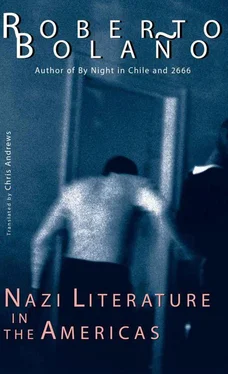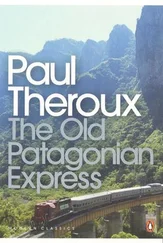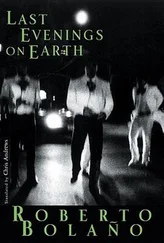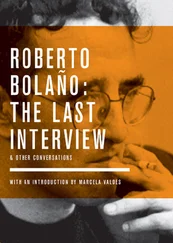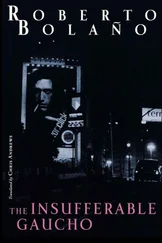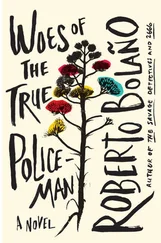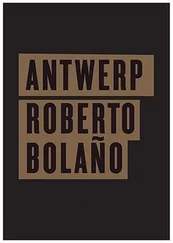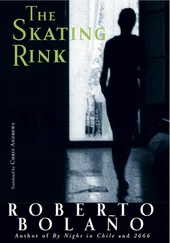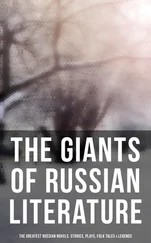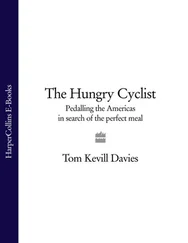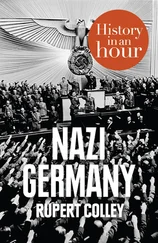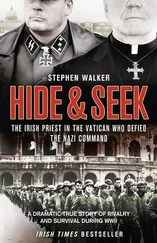Marcos Ricardo Alarcón Chamiso. Arequipa, 1910–Arequipa, 1977. Poet, musician, painter, sculptor and amateur mathematician.
Susy D’Amato. Buenos Aires, 1935–Paris, 2001. Argentinean poet and friend of Luz Mendiluce. She ended her days selling Latin American handcrafts in the French capital.
Duchess of Bahamontes. Cordoba, 1893–Madrid, 1957. Duchess and Cordoban. Period. Her (platonic) lovers numbered in the hundreds. Urinary problems and anorgasmia. A fine gardener in her old age.
Pedro Barbero. Móstoles, 1934–Madrid, 1998. Secretary, lover and confidant of Luz Mendiluce. The Miguel Hernández of the populist right. Author of proletarian sonnets.
Gabino Barreda. Hermosillo, 1908–Los Angeles, 1989. Renowned architect. He began as a Stalinist and ended as a Salinist, supporting Carlos Salinas de Gortari.
Tatiana von Beck Iraola. Santiago, 1950–Santiago, 2011. Feminist, gallery owner, journalist, conceptual sculptor, one of the pillars of Chilean cultural life.
Luis Enrique Belmar. Buenos Aires, 1865–Buenos Aires, 1940. Literary critic. He declared that Macedonio Fernández couldn’t write to save his life. Savage in his treatment of Edelmira Thompson.
Hugo Bossi. Buenos Aires, 1920–Buenos Aires, 1991. Architect. Creator of the Museum-Hotel projects, which were, he confessed, inspired by his years as a boarder at a Jesuit school in the Province of Buenos Aires. The Museum-Hotel, as well as being a museum open to the public and a residence for artists in need, was to have various subterranean sports grounds, a velodrome, a cinema, two theaters, a chapel, a supermarket, and a small, discreet police station.
Jack Brooke. New Jersey, 1950–Los Angeles, 1990. Art dealer associated with the drug trade and money-laundering. Declaimer and quick-change artist in his spare time.
Mauricio Cáceres. Tres Arroyos, 1925–Buenos Aires, 1996. Second husband of Luz Mendiluce. Popularly known as The Martín Fierro of the Apocalypse. Onetime editor of American Letters .
Florencio Capó. Concepción, 1920–Santiago, 1995. Friend and confidant of Pedro González Carrera. Although very fond of González, he could never understand his friend’s posthumous fame.
Dan Carmine. Los Angeles, 1958–Los Angeles, 1986. Extremely well-endowed porn actor. His penis was eleven and a half inches long. He had the bluest eyes in the business, and worked in several of Adolfo Pantoliano’s films.
Aldo Carozzone. Buenos Aires, 1893–Buenos Aires, 1982. Epicurean philosopher and private secretary to Edelmira Thompson.
Edelmiro Carozzone. Buenos Aires, 1940–Madrid, 2027.The only child of Aldo Carozzone. He was originally to be named Adolfo (after Adolph Hilter), but at the last minute, his father chose instead the name of his employer and benefactor, as a mark of his devoted friendship. As a boy he was perpetually amazed and fitfully happy. He later worked as a secretary to the Mendiluce family.
John Castellano. Mobile 1950–Selma, 2021. North American writer. Dubbed The Duce of Alabama by Argentino Schiaffino.
Enzo Raúl Castiglioni. Buenos Aires, 1940–Buenos Aires, 2002. Leader of the Boca Juniors soccer gang. When he was imprisoned, his place was taken by Italo Schiaffino. Closely resembled a rat, according to some of his contemporaries. A hybrid of rat and peacock, according to others. A pathetic loser, in the opinion of his family.
Juan Cherniakovski. Valdivia, 1943–El Salvador, 1984. Panamerican poet and guerrila fighter. Second cousin of the Soviet general Ivan Cherniakovski.
Arthur Crane. New Orleans, 1947–Los Angeles, 1989. Poet. Author of a number of important books, including Homosexual Heaven and Disciplining Children . He indulged his suicidal tendencies by frequenting the underworld and hanging out with lowlifes. Others smoke three packs of cigarettes a day.
Eugenio Entrescu. Bacau, Rumania, 1905–Kishinev, Ukraine, 1944. Rumanian General. During the Second World War he distinguished himself in the capture of Odessa, the Siege of Sebastopol and the Battle of Stalingrad. Erect, his member was exactly twelve inches long, half an inch longer than that of Dan Carmine. He commanded the 20th Division, the 14th Division and the 3rd Infantry Corps. His soldiers crucified him in a village near Kishinev.
Atilio Franchetti. Buenos Aires, 1919–Buenos Aires, 1990. Painter who took part in the Poe’s Room project.
Persio de la Fuente. Buenos Aires, 1919–Buenos Aires, 1990. Argentinean colonel and eminent semiologist.
Honesto García. Buenos Aires, 1950–Buenos Aires, 2013. Onetime hit man and leader of the Boca soccer gang. Died a beggar, bawling tangos, crying and shitting in his pants in an out-of-the-way street in Villa Devoto.
Martín García. Los Angeles, Chile, 1942–Perpignan, 1989. Chilean poet and translator. His writing workshop held in the Concepción medical faculty was one of the world’s most disgusting phenomena: two steps away, across the corridor, was the operating theater where the anatomy students were dissecting corpses.
María Teresa Greco. New Jersey, 1936–Orlando, 2004. Argentino Schiaffino’s second wife. According to eye-witnesses she was tall, thin and bony, a sort of ghost or incarnation of the will.
Wenceslao Hassel. Pando, Uruguay, 1900–Montevideo, 1958. Playwright. Author of America’s Domestic Wars, How to Be a Man, Ferocity, Argentinean Women in Paris and other plays, applauded in their day by theater audiences in Buenos Aires, Montevideo and Santiago de Chile.
Otto Haushofer. Berlin, 1871–Berlin, 1945. Nazi philosopher. Godfather of Luz Mendiluce and father of various harebrained theories: hollow earth, solid universe, original civilizations, the interplanetary Aryan tribe. He committed suicide after being raped by three drunk Uzbek soldiers.
Antonio Lacouture. Buenos Aires, 1943–Buenos Aires, 1999. Argentinean military officer. He defeated subversives but lost the Falklands. An expert in the “submarine” technique and the application of electrodes. He invented a game using mice. The sound of his voice made prisoners tremble. He received various decorations.
Julio César Lacouture. Buenos Aires, 1927–Buenos Aires, 1984. Luz Mendiluce’s first husband. Author of an “Ode to San Martín” and an “Ode to O’Higgins,” which both won municipal prizes.
Juan José Lasa Mardones. Cuban poet whose life is a mystery, with scattered poems to his name. Possibly invented by Ernesto Pérez Masón.
Philippe Lemercier. Nevers, 1925–Buenos Aires, 1984. French landscape painter and editor of Ignacio Zubieta’s posthumous works.
Juan Carlos Lentini. Buenos Aires, 1945–Buenos Aires, 2008. Onetime soccer gang leader. He finished his days as a federal government employee.
Carola Leyva. Mar del Plata, 1945–Mar del Plata, 2018. Argentinean poet and follower of Edelmira Thompson and
Luz Mendiluce.
Susana Lezcano Lafinur. Buenos Aires, 1867–Buenos Aires, 1949. Hostess. Her salon was one of the institutions of cultural life in Buenos Aires.
Marcus Long. Pittsburgh, 1928–Phoenix, 1989. Poet whose work successively resembled that of Charles Olson, Robert Lowell, W. S. Merwin, Kenneth Rexroth and Lawrence Ferlinghetti. Literature professor. Father of Rory Long.
Cecilio Macaduck. Concepción, 1956–Santiago, 2021. Chilean writer whose curious work, characterized by abundant detail and ominous atmospheres, has won him an enthusiastic following among critics and general readers. Until the age of thirty-three he worked as a sales assistant in a
shoe store.
Berta Macchio Morazán. Buenos Aires, 1960–Mar del Plata, 2029. Amateur illustrator. Niece and lover of Dr. Morazán. Also the lover of Argentino Schiaffino. Highly strung. Her relationships with the aforementioned individuals resulted in committal to an insane asylum and several suicide attempts. Doctor Morazán liked to tie her to the bed or to a chair. Argentino Schiaffino preferred the more traditional slaps, or stubbing out cigarettes on her arms and legs. She was also the lover of Scotti Cabello and occasionally eight or nine long-time members of the Boca soccer gang. Morazán always said that he loved her like a daughter.
Читать дальше
